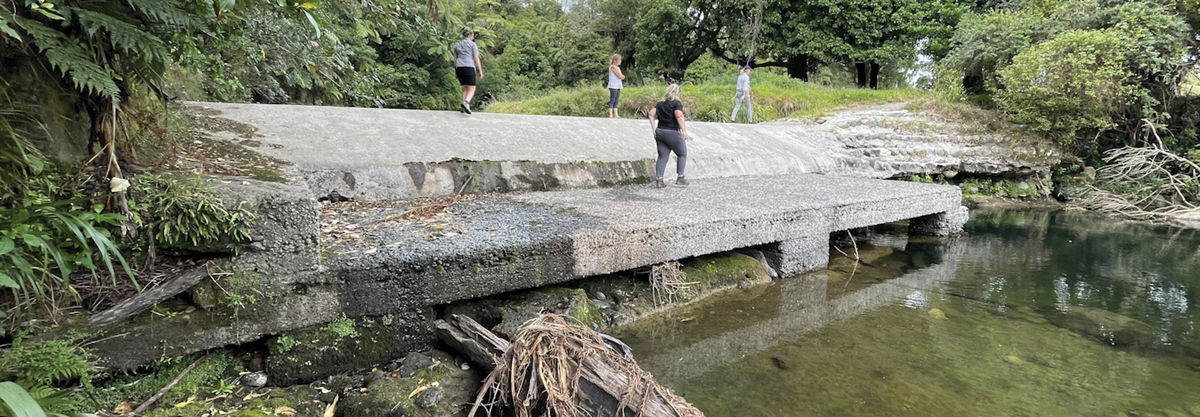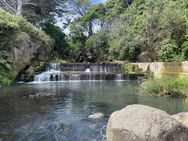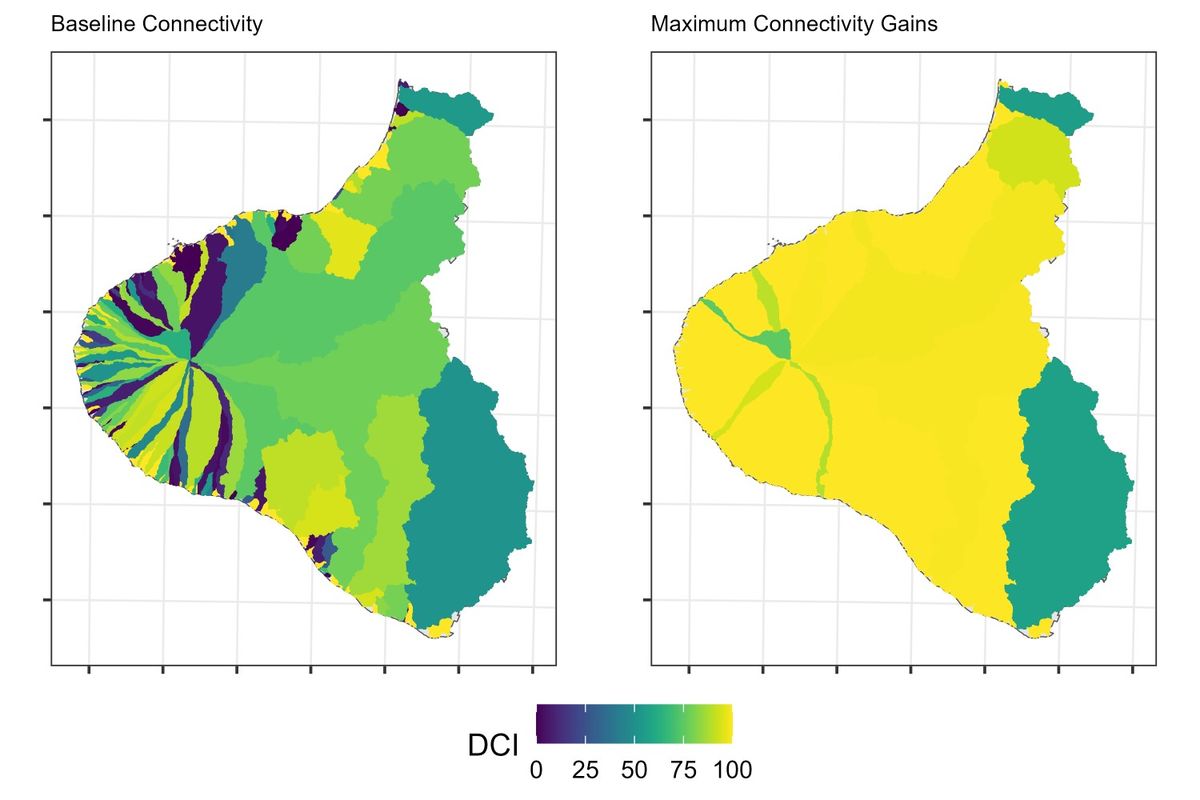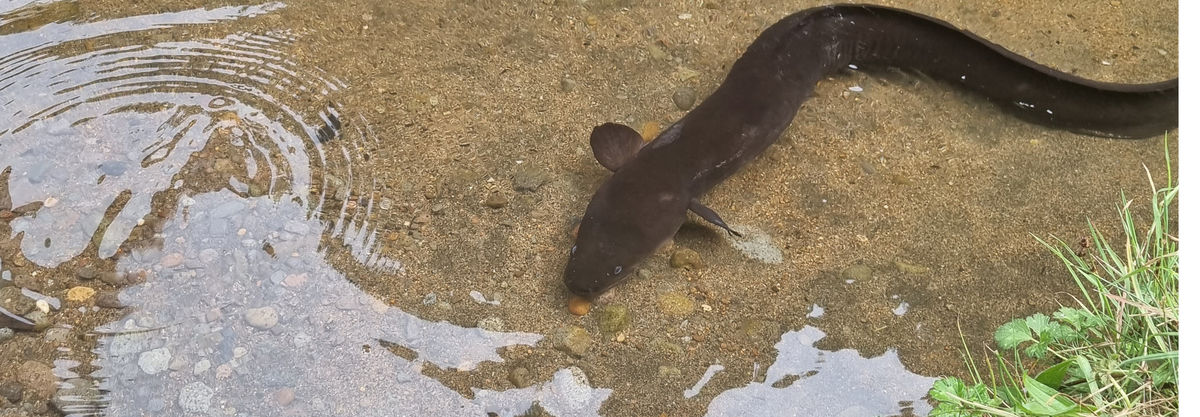
Fish Passage Remediation Project
What is the problem?
Aotearoa New Zealand has many native fish species that undertake migrations to breed, including lamprey, whitebait, and eels. According to the Department of Conservation (DOC), 76% of New Zealand's freshwater fish species are considered threatened or at risk of extinction. This includes species that are categorized as nationally critical, nationally endangered, or nationally vulnerable. Loss of habitat and barriers to migration are contributing factors.
Fish species need to move between freshwater habitats to feed and spawn, and many require access between the sea and freshwater habitats to complete their life cycles. Instream barriers can prevent fish from undertaking these migrations. Whilst some natural features like waterfalls and rapids can create natural barriers, man-made structures can pose a real problem.
Dams, weirs, fords, culverts and tide and flood gates can prevent or delay the movement of fish if they are not designed with fish passage in mind. Structures with significant drops, fast water flows and long structures without rest areas, are especially problematic.
The government has recognised the importance of improving fish passage in new policies and regulations for freshwater under the National Policy Statement for Freshwater Management 2020 (NPS-FM 2020) and the National Environmental Standards for Freshwater. DOC also has additional fish passage responsibilities under the Freshwater Fisheries Regulations 1983.
The new policies and regulations provide councils with updated direction on how they should manage freshwater under the Resource Management Act (RMA). The NPS-FM 2020 requires that freshwater is managed in a way that gives effect to Te Mana o te Wai, prioritising the health and wellbeing of water first; second, the health needs of people; and third, the ability of people and communities to provide for their social, economic and cultural wellbeing, now and in the future.
For New Zealand’s freshwater to be healthy, fish need to be able to move freely between and within freshwater ecosystems. Clause 3.26(6) of the NPS-FM 2020 directs regional councils to develop action plans for maintaining or improving fish passage (clause 3.26(6)).
What is the project?
There is a lack of targeted information, advice and support for farmers and farm advisors about fish barriers and how to ensure fish passage is provided for on farm.
This project aims to work with other agencies to:
- Identify priority fish passage barriers on farms
- Undertake works to remove, replace and/or remediate on-farm structures to facilitate fish passage
- Develop case studies and supporting “how to” guides
- Investigate options to incorporate fish passage remediation into on-farm extension programmes (like Farm Environment Plans)

Katie Collins


Who else is involved
Taranaki was chosen as the focus region for this project due to the opportunity to collaborate with a range of other agencies and stakeholders and to build on existing work in this area.
DOC has its own responsibilities for fish passage under the Freshwater Fisheries Regulations 1983, and to advocate for freshwater fish habitat protection under the Conservation Act 1987. The Taranaki region contains high quality freshwater habitat in its headwaters within the National Park area that DOC administers. Unfortunately, some of these areas are inaccessible to some species because of instream barriers.
DOC and the Ministry for the Environment (MfE) co-ordinate the NZ Fish Passage Advisory Group which is a group of experts that support and develop resources for fish passage. This group are supportive of this project and have identified the need for further work on farm structures.
Taranaki Regional Council (TRC) have good regional data about instream structures and have identified a number of potential fish barriers that may be restricting fish access to these areas. They are also working with the National Institute of Water and Atmospheric Research (NIWA) to develop a Fish Passage Action Plan for the region.
Fonterra has recently supported TRC to remediate several legacy dairy factory structures in priority locations. Sustainable dairying advisors are also working with individual Fonterra suppliers to develop Farm Environment Plans that assess each farm and identify environmental strengths and opportunities for improvement.
What has been done?
The NZ Fish Passage Guidelines and Fish Passage Assessment Tool have been developed to support fish passage management in New Zealand.
NIWA has recently been contracted by the MfE to assist some regional councils to develop and implement Fish Passage Action Plans (FPAPs) to maintain or improve the passage of fish and the health of native fish populations. To assist with this, NIWA have developed a tool called the Dendritic Connectivity Index (DCI) to measure the extent of fragmentation in each catchment across the country. The DCI score ranges from 0 (fully fragmented) to 100 (fully connected).
NIWA has developed a framework to prioritize the removal of barriers that disrupt fish movement. This framework considers the DCI score and other factors such as invasive species and species richness can be incorporated into the prioritisation to identify where to focus restoration actions across the catchment. NIWA is also building a model to predict the fish passage risk of unassessed structures and prioritizing the barriers that need to be assessed urgently to fill in gaps in the information. NIWA has shared lists of the top barriers with regional councils to begin ground-truthing them and reduce uncertainty in the final prioritization.
What’s next?
- Identify prioritised on farm structures
- Make contact with landowners
- Undertake site visits to scope the work required and identify likely remediation options
- Costing and resource consent applications (if required) for remediation to be developed
- Fish surveys will be done before and after the projects to understand migratory fish movements and how much impact the barriers have had on fish populations.
- Develop a communications plan with partners, using internal and external channels to ensure information is integrated into farm management.
More information
NIWA Fish Passage Assessment Tool
Fish passage: implementation guidance on Essential Freshwater policies and regulations
